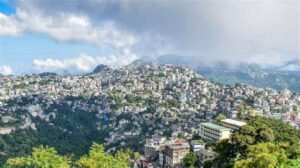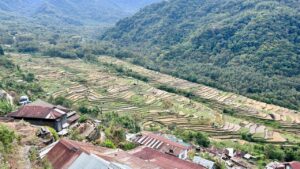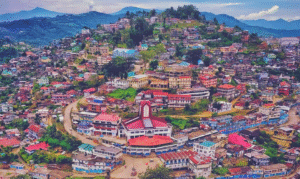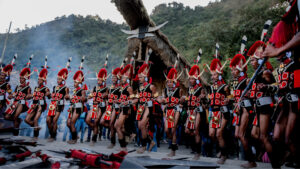Dawki and the Umngot River are famous for their crystal-clear waters, located in the northeastern part of India, specifically in the state of Meghalaya. These rivers have become a subject of fascination due to their extraordinary clarity, which allows viewers to see the riverbed clearly from above. In this blog, we will explore the historical roots, cultural aspects, and environmental significance of Dawki and the Umngot River. Let’s dive into the unique features that make these rivers stand out and their importance to the local community and environment.
Historical Roots: The Origins of Dawki and Umngot River
The Umngot River flows through the lush green landscapes of the Khasi Hills in Meghalaya. Its history dates back centuries, with the river serving as a vital waterway for the local communities. The river has long been important for transportation, agriculture, and daily life. The nearby town of Dawki, located along the banks of the Umngot River, has been a traditional trade route between India and Bangladesh for years.
Local legends also speak of the river’s mystical powers. It is believed that the river holds significant spiritual importance for the indigenous Khasi people who have lived in the region for generations. Over time, the Umngot River has become synonymous with purity, tranquility, and the connection between nature and humans.
Language and Communication: The Khasi Influence
In Dawki and the surrounding areas, the primary language spoken is Khasi. Khasi, part of the Austroasiatic language family, is widely spoken by the local communities. While English and Hindi are used in official settings, Khasi remains the language of day-to-day life and cultural expression.
The language of the Khasi people carries a deep connection to the land and natural resources. Many Khasi words are derived from nature, representing elements like rivers, mountains, and trees. Communication often includes storytelling and oral traditions, where the Umngot River plays a central role as a source of life, inspiration, and heritage.
Festivals and Celebrations: Celebrating Life by the River
Meghalaya, including the Dawki area, is rich in cultural festivals. One of the most important celebrations is Shad Suk Mynsiem, which celebrates the harvest season. People gather along the riverbanks for dances, music, and feasts, all of which reflect a deep appreciation for nature’s blessings. The Umngot River is often seen as a place for reflection and thanksgiving, symbolizing purity and prosperity.
The Behdienkhlam Festival, another key event in the region, is celebrated with much enthusiasm and fervor. It is marked by colorful processions, traditional dances, and vibrant rituals. Though not directly tied to the Umngot River, the festival’s spirit of gratitude toward nature is deeply connected to the river’s presence in the lives of the Khasi people.
Arts, Crafts, and Music: The Creative Spirit of Dawki
The Khasi people of Dawki and its surrounding areas are known for their craftsmanship. Khasi textiles—particularly handwoven fabrics such as shawls and wraps—are notable for their intricate patterns and vibrant colors. The designs often symbolize aspects of nature and the community’s beliefs.
In addition to textiles, the region is known for its woodwork, pottery, and beadwork. Traditional musical instruments like the Ksing (a type of drum) and Tiew Rymbai (a bamboo flute) are commonly used in local performances. Music and dance are important cultural expressions that celebrate the river, its life-giving properties, and the interconnectedness of the community with nature.
Cuisine and Culinary Traditions: A Taste of the Land
The cuisine in Dawki is simple yet flavorful, with rice being the main staple. The local cuisine includes a variety of dishes made from rice, vegetables, and meats like pork and chicken. Pork with bamboo shoots is a common dish enjoyed by locals. Vegetable stews and fish from the Umngot River are also popular, with fresh ingredients contributing to the healthy, nutrient-rich meals.
Spices such as ginger, garlic, and chilies are used liberally, adding depth and flavor to dishes. Pickles made from locally grown vegetables are an essential part of the meals, offering a tangy contrast to the rich, hearty dishes.
Attire and Ornamentation: Traditional Khasi Dress
The traditional attire of the Khasi people reflects the region’s cultural richness. Women typically wear Phad, a wrap-around skirt made from handwoven fabric. The Phad is paired with a blouse and a shawl, often embroidered with intricate designs that carry cultural significance. The designs on the fabrics symbolize nature, family, and the environment, illustrating the deep connection between the people and the land.
Men usually wear lungis or dhoti, paired with a simple shirt. The men may also wear a jaapi (a traditional hat) and adorn themselves with silver jewelry, especially during festivals or ceremonial occasions. Jewelry, especially silver and bead ornaments, is highly valued and worn for both decoration and spiritual purposes.
Beliefs and Values: Spiritual Significance of the River
The Umngot River is not just a source of water but also holds deep spiritual significance for the Khasi people. Animism, the belief in spirits residing in nature, plays a key role in the Khasi worldview. The river is considered sacred, and local beliefs assert that the spirits of ancestors watch over the waters. The people believe that maintaining the purity of the river is essential for the community’s well-being.
Many Khasi people perform rituals along the river, offering prayers for good health, prosperity, and harmony with nature. These practices highlight the respect for natural elements and the belief that the balance between humanity and the environment is crucial for survival.
Customs and Etiquette: Social Norms by the River
In Dawki and surrounding areas, hospitality is a core value. When visiting someone’s home, it is customary to bring a gift as a sign of respect. Greeting a host with a handshake or the traditional khasior (blessing gesture) is common. Social interactions are warm, and there is a strong sense of community.
The river itself plays a role in community events. People often gather at the riverbanks for socializing, fishing, or simply relaxing. The river serves as a meeting point, a place for reflection, and an opportunity for bonding within the local community.
Architecture and Symbols: Structures in Harmony with Nature
The architecture in Dawki and the wider Khasi Hills reflects the natural environment. Traditional Khasi homes, often made from bamboo and wood, are built to withstand the region’s heavy rainfall. The roofs are typically steeply sloped to allow rainwater to drain off quickly, a practical solution to the area’s frequent showers.
In addition to practical considerations, there are sacred groves near homes, which are believed to be inhabited by spirits. These groves are protected and revered, symbolizing the importance of maintaining a respectful relationship with nature.
Oral Traditions and Storytelling: Preserving History
In the Khasi community, storytelling is a vital aspect of preserving history and culture. Many stories are passed down orally, from generation to generation, about the creation of the river, the connection to nature, and the roles of the spirits that inhabit the land. Folklore and myths surrounding the Umngot River reflect its spiritual importance, and stories often serve as lessons about respect for the natural world.
Community gatherings often involve storytelling sessions where elders share these ancient tales. The river plays a central role in many of these stories, symbolizing life, purity, and the interconnectedness of all living things.
Interactions with Nature: A Symbiotic Relationship
The people of Dawki have a deep, symbiotic relationship with nature, particularly the Umngot River. The river provides essential resources for drinking water, fishing, and agriculture. The clarity of the water is a testament to the environmental practices of the local community, who have long understood the importance of preserving the purity of the river.
Fishing is an important activity in the river, and local methods are designed to ensure sustainability. Rainwater harvesting techniques are also commonly practiced to conserve water, especially during drier periods. The people of Dawki are aware that their well-being is closely linked to the health of the Umngot River, and they actively take steps to protect it.
Challenges and Preservation: Protecting the Crystal-Clear Waters
The Umngot River, with its stunning clarity, faces growing environmental challenges. Pollution, deforestation, and tourism are putting pressure on the river’s delicate ecosystem. Efforts to preserve the river include local awareness programs, stricter regulations on waste disposal, and sustainable tourism practices.
Local organizations and the Khasi community are working together to raise awareness about the importance of maintaining the river’s purity. This includes educating the public on the dangers of littering and the importance of preserving water resources.
Contributions to Society: A River of Knowledge
The Umngot River is not only a natural wonder but also contributes to global knowledge about environmental preservation. Researchers and scientists study the river to understand how its crystal-clear waters are maintained despite the challenges posed by a changing climate. The local community’s practices offer valuable lessons in sustainable living and environmental conservation.
Connection to Northeast India: The Heart of Meghalaya
Dawki and the Umngot River are vital to the cultural and environmental fabric of Northeast India. They are an essential part of Meghalaya’s identity, symbolizing the region’s deep connection to nature. The river’s purity and significance reflect the community’s respect for the environment and their efforts to live in harmony with the land.
Conclusion: Preserving the Beauty of Dawki and Umngot River
Dawki and the Umngot River are treasures of nature and culture. The crystal-clear waters represent not just the physical beauty of the region but also the deep spiritual connection that the Khasi people have with their environment. As we learn more about the significance of the river, let us also remember our responsibility to preserve and protect such natural wonders for future generations.
By respecting nature and practicing sustainable living, we can ensure that the Umngot River remains a symbol of purity and harmony for years to come. Let’s take inspiration from the people of Dawki and work together to protect our planet’s precious natural resources.






